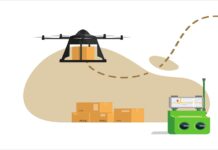The global logistics automation market has experienced significant growth in recent years, driven by advancements in technology, the increasing complexity of global trade, and the demand for greater efficiency and cost reduction. This article delves into the current state of the market, exploring its size, share, opportunities, challenges, demand drivers, and emerging trends shaping the future of logistics automation.
Market Size and Share
In 2023, the global logistics automation market was valued at USD 32.70 billion and is projected to reach USD 77.61 billion by 2031, growing at a compound annual growth rate (CAGR) of 11.41% between 2024 and 2031. This growth is fueled by increasing demand for automation across various sectors, including manufacturing, retail, and transportation.
The logistics automation sector is a crucial component of the global supply chain, with companies across multiple industries seeking ways to streamline operations and improve overall productivity. Key players in the market include technology giants, robotics manufacturers, and logistics service providers that are leveraging automation to remain competitive in an increasingly fast-paced market.
Market Opportunities
Several key opportunities are driving the expansion of the global logistics automation market:
- Improved Efficiency: Automation in logistics helps streamline processes, reducing the need for manual labor and minimizing errors. This leads to improved efficiency and faster processing times in operations such as order picking, packaging, and shipping.
- Cost Savings: By automating repetitive tasks, companies can significantly reduce labor costs and optimize transportation and inventory management. This translates into lower operational expenses and higher profit margins.
- Enhanced Visibility: Automation provides real-time visibility into supply chain operations, allowing companies to track goods and materials more accurately. With better insights into potential bottlenecks, businesses can proactively address issues and optimize their logistics networks.
- Scalability: Automated logistics systems are highly adaptable and can be easily scaled up or down to meet changing market demand. This flexibility is vital for companies that experience seasonal fluctuations or sudden increases in order volume.
- Workplace Safety: By automating high-risk tasks, businesses can reduce the likelihood of workplace accidents and injuries. Robots and automated systems handle tasks such as heavy lifting and hazardous material transport, ensuring a safer working environment.
Market Challenges
Despite the potential for growth, the global logistics automation market faces several challenges that companies must address:
- High Upfront Costs: The initial investment in automation technology can be substantial, requiring careful financial planning. Businesses must consider the long-term benefits of automation against the short-term capital expenditure.
- Technological Limitations: Although automation technology has advanced considerably, there are still limitations regarding flexibility and integration with existing systems. Customization and adaptability remain challenges, especially for companies with legacy systems.
- Labor Displacement: As automation takes over more logistical tasks, there are growing concerns about job displacement. The potential social and economic impacts of reduced demand for manual labor must be addressed through workforce retraining and upskilling programs.
- Cybersecurity Risks: Automated logistics systems are vulnerable to cyberattacks, which can disrupt operations and compromise sensitive data. Companies must invest in robust cybersecurity measures to protect their networks and systems from potential threats.
- Regulatory Compliance: Adhering to various regulatory standards, such as data privacy laws and safety regulations, can be complex and costly. Businesses must stay up to date with compliance requirements in their respective industries to avoid potential fines or legal issues.
Market Demand Drivers
Several factors are driving the growing demand for global logistics automation:
- E-commerce Growth: The rise of e-commerce has transformed the logistics industry, increasing the need for efficient, automated solutions to meet growing customer demands. Online shopping has led to a surge in orders and a need for faster fulfillment, making automation a necessity for many companies.
- Global Trade Expansion: As trade between countries increases, supply chains are becoming more complex. Automation helps manage these intricate logistics networks by providing real-time visibility and optimizing routes to ensure timely deliveries.
- Just-in-Time (JIT) Inventory: Many businesses have adopted JIT inventory systems to reduce excess stock and cut storage costs. Automation allows for more precise inventory tracking, ensuring that products are delivered when needed without overstocking or shortages.
- Rising Customer Expectations: Consumers today expect fast and reliable delivery services, often within a day or two of placing an order. Automated logistics solutions help meet these expectations by improving the speed and accuracy of order processing and shipping.
- Environmental Concerns: Automation plays a significant role in reducing the environmental impact of logistics operations. By optimizing transportation routes and reducing unnecessary trips, companies can lower fuel consumption and carbon emissions, contributing to greener supply chains.
Market Trends
Several key trends are shaping the future of the global logistics automation market:
- Robotics: Robots are increasingly being used in logistics facilities for tasks such as order picking, packing, and transportation. These robots improve accuracy and speed, enabling companies to handle higher volumes of orders with fewer errors.
- Artificial Intelligence (AI): AI-powered systems are transforming logistics operations by optimizing routing, scheduling, and inventory management. These intelligent systems analyze vast amounts of data to make real-time decisions that improve operational efficiency and reduce costs.
- Internet of Things (IoT): IoT-enabled devices are being deployed to track assets, monitor conditions, and optimize processes within the supply chain. By providing real-time data, IoT devices help companies improve visibility, prevent delays, and enhance decision-making.
- Autonomous Vehicles: The development of autonomous vehicles, including self-driving trucks and drones, is expected to revolutionize the logistics industry. These vehicles can transport goods without human intervention, reducing labor costs and increasing delivery efficiency.
- Cloud-Based Solutions: Cloud-based logistics automation platforms are gaining popularity due to their flexibility, scalability, and ease of integration. These platforms allow businesses to manage logistics operations remotely and in real time, providing greater control and visibility over supply chains.
Conclusion
The global logistics automation market is poised for significant growth, driven by the increasing need for efficiency, cost savings, and enhanced supply chain visibility. As technology continues to advance and the demand for automated logistics solutions rises, the market is expected to expand further, with innovations such as robotics, AI, and IoT transforming the industry.
However, businesses must also navigate challenges such as high upfront costs, cybersecurity risks, and regulatory compliance. By addressing these obstacles and embracing automation, companies can build more resilient, agile supply chains that are better equipped to handle the complexities of modern global trade.

























